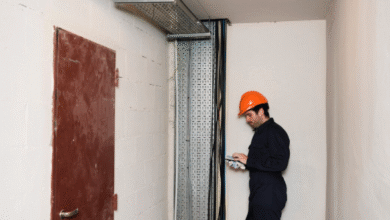Enhancing Surface Durability with Floor Coating and Joint Sealant Solutions

In both industrial and commercial environments, the integrity of floors plays a significant role in safety, aesthetics, and long-term maintenance costs. Floors are subject to constant wear and tear from foot traffic, machinery, chemical spills, moisture, and temperature fluctuations. To maintain performance and longevity, two essential components often come into play: floor coating and joint sealant.
Floor coatings provide a protective and decorative layer that enhances durability and makes cleaning and maintenance easier. Joint sealants, on the other hand, are used to fill and seal joints and cracks, preventing moisture ingress, contamination, and structural damage. When used together, these solutions offer comprehensive protection that extends the life of the flooring system and contributes to a safer and more efficient working environment.
The Role and Benefits of Floor Coating
1. Enhanced Surface Protection
Floor coatings are applied to concrete and other flooring surfaces to provide a barrier against environmental damage, abrasion, and chemical exposure. In industrial settings, where floors endure constant mechanical stress, a well-applied floor coating prevents degradation caused by forklifts, pallet jacks, and heavy machinery.
- Chemical Resistance: Ideal for laboratories, food processing units, and warehouses, coatings resist damage from oils, acids, and other harsh substances.
- Abrasion Resistance: Heavy traffic areas benefit from the wear-resistance that coatings offer, keeping surfaces intact and functional for years.
- Moisture Protection: Sealing porous concrete with a floor coating minimizes water absorption, which can otherwise lead to mold growth or structural weakening.
2. Improved Aesthetics and Safety
Floor coatings not only protect but also improve the visual appeal of a facility. With options ranging from glossy finishes to textured, anti-slip surfaces, coatings help enhance safety and create a professional appearance.
- Color Customization: Specific colors can be used for demarcating work zones, guiding traffic, or matching corporate branding.
- Anti-Slip Additives: Especially important in wet or oily environments, these additives reduce the risk of slips and falls.
- Light Reflection: Glossy coatings increase the reflectivity of indoor lighting, improving visibility and reducing energy costs.
3. Simplified Maintenance and Hygiene
With a smooth, sealed surface, cleaning becomes significantly easier. Dirt, dust, and contaminants can be quickly removed, making coatings ideal for environments where hygiene is critical, such as healthcare facilities or food production areas.
- Seamless Finish: No gaps or joints where bacteria or grime can accumulate.
- Resistant to Staining: Coated floors are less likely to absorb spills, maintaining a clean appearance.
- Low Maintenance Costs: Long-lasting durability translates to fewer repairs and lower upkeep expenses over time.
The Importance and Function of Joint Sealant
1. Preventing Structural Damage
Concrete floors expand and contract due to temperature changes, leading to the formation of joints. If these joints are left unsealed, water, chemicals, and debris can infiltrate and cause cracks, corrosion, and eventual structural failure. Joint sealant acts as a flexible barrier that accommodates movement while keeping damaging agents out.
- Movement Accommodation: Sealants allow joints to move without cracking, preserving structural integrity.
- Moisture Protection: Prevents water ingress that could cause concrete spalling or rebar corrosion.
- Contamination Control: Stops debris, oils, and chemicals from penetrating joints and weakening the flooring system.
2. Enhanced Load-Bearing Capacity
In areas where heavy equipment or frequent traffic is common, sealed joints distribute weight more evenly, reducing localized stress on the floor. This extends the life of both the joint and the floor itself.
- Even Surface Support: Prevents joint edges from chipping under repeated load stress.
- Smooth Transitions: Minimizes bumps and cracks that can impede machinery or cause trips and falls.
- Improved Performance: Maintains a flat and functional surface over time.
3. Protection Against Environmental Factors
Joint sealants also protect against weather conditions in outdoor applications, such as in parking garages or exposed warehouse floors. UV-stable formulations resist sunlight degradation, while flexible sealants withstand freeze-thaw cycles.
- Temperature Resistance: Maintains elasticity in extreme hot or cold climates.
- UV Stability: Prevents cracking and discoloration from sun exposure.
- Long-Term Durability: Reduces frequency of resealing, saving time and cost.
Choosing the Right Floor Coating and Joint Sealant
1. Material Compatibility and Application Environment
Not all coatings and sealants are suitable for every setting. Selection depends on the nature of the surface, exposure conditions, and desired performance.
- Epoxy Coatings: Ideal for high-traffic industrial and commercial floors due to excellent durability and chemical resistance.
- Polyurethane Coatings: Offer superior flexibility and UV stability, making them perfect for areas with heavy movement and exposure to sunlight.
- Silicone and Polyurethane Sealants: These are commonly used for flexible joint sealing in both interior and exterior applications.
2. Application Technique and Surface Preparation
Proper surface preparation is critical to ensure the longevity and performance of coatings and sealants. Any moisture, grease, or dust on the surface can interfere with adhesion, leading to premature failure.
- Mechanical Grinding or Shot Blasting: Used to create a clean, rough profile for better coating adhesion.
- Priming: Some surfaces require a primer to enhance bond strength.
- Joint Cleaning and Backer Rod Installation: Ensures that sealants bond only to the sides of the joint, not the bottom, allowing for optimal movement and adhesion.
3. Maintenance and Life Expectancy
Different products have different lifespans and maintenance needs. It’s essential to understand the expected wear cycle and plan accordingly.
- Inspection Cycles: Regular checks help detect early signs of failure like peeling, cracking, or discoloration.
- Spot Repairs: Damaged areas can often be repaired locally without removing the entire coating or sealant.
- Reapplication: Floor coatings typically last 5–10 years, while joint sealants may need reapplication every 3–5 years, depending on traffic and exposure.
Integrating Coatings and Sealants for Complete Protection
To get the most out of your flooring system, combining floor coating with joint sealant provides a holistic defense mechanism. The floor coating guards against surface wear and chemical exposure, while the joint sealant tackles structural vulnerabilities at the weakest points.
- Comprehensive Coverage: Together, they protect every part of the floor from edge to edge.
- Reduced Repair Costs: Proactive protection minimizes the need for major repairs or replacements.
- Extended Lifespan: Floors last significantly longer, with improved performance in both functionality and appearance.
Conclusion
Whether managing a warehouse, manufacturing plant, retail space, or healthcare facility, investing in proper floor coating and joint sealant systems is a smart, long-term solution for surface durability. These materials are not just surface treatments—they are critical components in protecting infrastructure, promoting safety, and reducing ongoing maintenance costs.
Choosing the right products, ensuring professional installation, and conducting regular inspections will keep your flooring system resilient and reliable. As technology in coatings and sealants continues to advance, facilities have more options than ever to enhance the performance and aesthetics of their spaces while meeting regulatory standards and operational goals.




